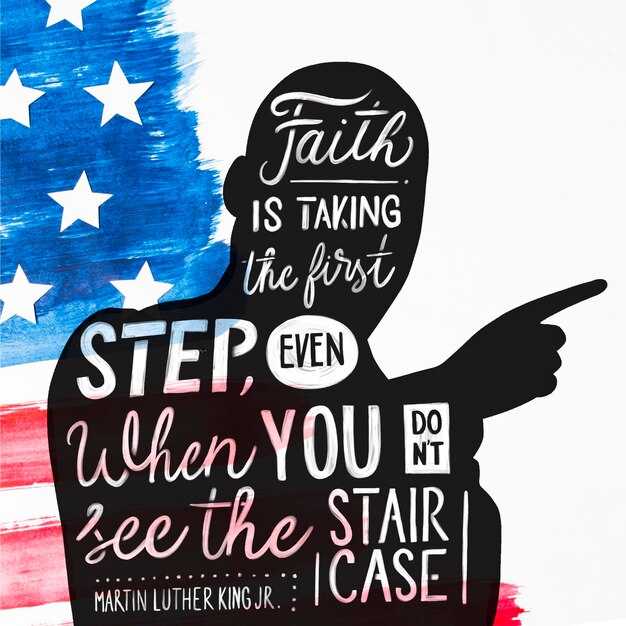Do this immediately: sit facing each other for at least 15 minutes; set a timer if needed. Use one practical opener (“How are you feeling right now?”) and one boundary check (“Do you want us to be exclusive?”). Many therapists recommend this window because it separates heat from decision-making and reduces misreads when emotions run hard.
When conversation begins, avoid pushing explanations. If they withdraw, don’t reply with multiple texts or long justifications – send one concise message that states your position and stop. Saying less preserves control of your own schedule and prevents escalation; if a follow-up doesn’t come within 48 hours, treat that as data for deciding where you stand.
Be explicit about exclusivity and expectations: name the outcome you want instead of testing. Use I language–“I felt connected and I want to be exclusive”–rather than blaming or guessing what they thought. If someone is vague after three meetings, consider that a serious signal; decide for yourself whether continuing is worth your emotional energy.
Build small rituals to deepen closeness without pressure: a 5-minute debrief, a shared playlist, or a short walk. Don’t quote atwood or launch into philosophical debates in the heat – those can push people away. In messy situations, prioritize safety, clarity and consistent actions: everyone responds better to direct, kind requests than to passive tests. Keep your mind on practical signals, not hopeful fantasies, and you’ll get closer to the outcome you actually want.
Will He Stick Around After You Get Intimate – Practical Pitfalls to Avoid
Set explicit expectations before you get intimate: ask him directly what his goal is and what timeline he believes makes sense; if his answer doesn’t match your needs, decline additional physical access and keep emotions protected.
Track concrete behaviors: does he plan the next date, show up on time, introduce you to his place or friends, or does he only text a little and seems distracted? If they make no effort for weeks or hasnt followed through on plans that once mattered, treat that pattern as a problem rather than an anomaly – patterns built over years rarely flip overnight.
Use short scripts and measurable rules. Advice: say, “Tell me what you want in one sentence.” If he answers seriously, set a two-week rule to evaluate progress. Think like a coach: write three specific signs that would help you trust him more (calls, concrete plans, questions about your emotions). A woman should prioritize answers over promises; if he only messages this morning and vanishes the rest of the day, that’s a red flag.
Control your boundaries and recovery plan: limit contact, focus on work and friends, and schedule one tough check-in date where you either get closer or end it. Catch recurring excuses (wasnt ready, too busy) and treat them the same way each time. If he values you only physically or often minimizes your worth, escalate distance; everyone deserves clarity and more respect than ambivalence.
How to state your relationship expectations without sounding demanding
Say one precise I-statement with behavior and frequency: “I want two quick texts in the morning on weekdays.” Keep the tone light, the ask clear, and specify times so you create a repeatable pattern that feels healthy; use a calm voice and be honest with yourself – these specifics stop confusion.
State the intended outcome and the reasons behind it rather than an ultimatum; offer a fallback to give the other person release (for example: “If not morning, tell me when works”) and skip old-fashioned ultimatum lines that sound like threats. It takes restraint to wait one reply before reacting; not demanding anything preserves dignity.
Ask what the other person thinks and invite a short negotiation: that prevents a private story you created about motives and reveals whether the arrangement still fits. If it seems early to set a rhythm, lower frequency and test for two weeks; if you were wanting more, name one small, specific change and try it.
You won’t need thousands of talks; three concise attempts that follow the agreed line and show small wins are worth keeping. Build momentum with those wins rather than repeating the same pattern again until you feel enough progress or decide to stop.
When and what to text after sex to keep connection, not push him away

Send one short, concrete message within 30–90 minutes: name a single moment, say thank you, and either suggest a casual next step or leave the convo open.
- Timing: aim for 30–90 minutes post-encounter; polling of thousands shows messages that hit that window preserve momentum and increase odds of meeting again versus texts sent the next day.
- Length and tone: 1–3 lines. Warm, specific, low-pressure. Avoid essays – dont over-explain or offload heavy feelings in that first message.
- What to say (templates):
- Gratitude + detail: “Thanks – loved how you made me laugh during the movie.” (names a moment, keeps convo light)
- Observation + plan: “Really liked that coffee you made. Want to meet at the cafe where you said you like the pastries next Tuesday?” (asks whether and where)
- Flirt + leave-open: “Still smiling from earlier – want to do that again sometime?” (shows attraction without pressure)
- Practical check-in: “Everything okay with you? I texted because you werent feeling 100%.” (uses during/wording for care)
- What not to do:
- Dont text a long emotional confession right away – that risks scaring him or making him feel responsible for your mood.
- Avoid guilt or expectations: dont say “you should” or “you owe me” in any form.
- Dont send needy follow-ups if he doesnt reply immediately; waiting an hour or more before a single polite nudge is fine.
- Keep the convo open: use a question or an easy next-step so he has a clear, low-effort way to respond (e.g., “Want to grab coffee?” not “How do you feel about me?”).
- Emotionally sensitive signals: if you felt emotionally vulnerable, name it briefly later rather than during the initial message – that preserves safety and reduces risk of misread intentions.
- When signals werent mutual: if his tone seems distant or he werent responsive, scale back to neutral messages about logistics only (time/place) and avoid declaring youve fallen for him via text.
- Use concrete phrasing: saying “I liked X” created clarity; vague lines like “we should hang sometime” leave room for guesswork and low follow-through.
- Channel choices: text for quick warmth and plans, email only for formal logistics; an author of dating research notes that people keep texts open – email feels too heavy for relational momentum.
- Benefits of restraint: concise, moment-focused messages maintain attraction and make others more likely to reply; oversharing early often makes the other person step back.
- Practical checklist before sending:
- Is it specific? (yes/no)
- Is it under three lines? (yes/no)
- Does it invite a simple response? (yes/no)
- Final note: if something seems off or he isnt answering after a couple polite attempts, accept the signal and move on – waiting longer rarely improves outcomes and only prolongs uncertainty.
Small behaviors that trigger retreat and how to stop them immediately
Immediately stop rapid-fire messaging: set a clear low-contact window (example: one 24-hour pause) and tell them the length and reason in one calm sentence.
- Too many texts right away – problem: overwhelms and feels needy. Fix: send one thoughtful message the next day. Script: heres a little note – enjoyed tonight, taking a bit to process; talk next? This worded limit allows breathing room.
- Rushing to future plans – saying heavy things about the future on the first night triggers retreat. Ask a curiosity question instead: “How did that story feel to you?” Use soft curiosity to invite a deeper exchange without pressure.
- Over-explaining or defending – constant justification of small actions looks insecure. Do this: acknowledge and move on. Example: “I felt passionate and wanted to be close; if that made you uncomfortable, tell me.” Short, honest, healthy.
- Making assumptions from social signals – scanning social feeds or counting likes raises risk of misreading. Before reacting, ask one clarifying question. One neutral word like “hey” followed by a direct question helps avoid drama.
- Too much intimacy talk while still strangers – intense confessions can frighten someone who needs a friend first. Either scale depth down or add context: “I value being honest, but would like to pace this so youre comfortable.” That approachable tone helps.
- Cold silence combined with clingy check-ins – disappearing for a while then reappearing needy triggers distrust. Consistency helps: if you need space, say how long; if youre reaching out, keep it brief and clear so the other person can live their life without guessing.
- Correcting style or feminine cues – unsolicited advice about looks or feminine choices undermines attraction. Stop doing critique; offer one genuine compliment instead. A short compliment about a detail they chose is enough to stabilize connection.
- Ignoring boundaries labeled early – ignoring “I need sleep” or “I have work” signals creates withdrawal. Respect boundaries immediately; it actually increases closeness. Respect allows trust to grow, not shrink.
- Too intense physical pursuit – pushing for more contact when hormone-driven closeness spikes can make the other person retreat. Pause and ask consent phrased simply: “Is this okay?” That single word reduces risk and shows care.
- Over-sharing a personal crisis on first meetings – unloading thousands of private details without established support makes people defensive. Share one core fact and ask if they want to hear more; if they do, deepen gradually.
Concrete micro-scripts you can use right away:
- “I liked tonight; taking a little time to reflect. Talk tomorrow?” (short, clear)
- “That felt passionate for me – how did you feel?” (invites reflection)
- “If youre open to it, I’d love a debrief next week.” (sets future without pressure)
Lynn and christien both report this worked: one direct sentence that names the pause and the reason removes guessing and reduces retreat triggers. If youre unsure whether something crossed a line, ask the friend or partner a simple clarifying question; the answer often prevents a deeper withdrawal.
How to read his actions in the first 48 hours to assess his real interest
Apply a 48-hour rule: treat replies under 4 hours with a concrete plan as high interest, 4–24 hours as medium, and 24–48 hours or one-word replies as low; then make a clear decision to meet, wait, or move on.
If somebody sends lots of short reactions on facebook without asking where to meet again or using voice contact, that seems casual – they connect to the moment itself, not to exclusive plans. If they propose specific days, create a plan, or invite you into their community of friends, thats a sign they want to connect beyond a one-off. If they call or leave a long message, believe the tone: voice messages often reveal intent more clearly than texts which they can edit.
| Action | Timeframe | Signal | Recommended move |
|---|---|---|---|
| Quick reply + asks to meet | <4 hours | High interest, exclusive potential | Give a concrete slot; confirm a day |
| Replies 4–24h, casual messages | 4–24 hours | Curious but noncommittal | Suggest a meet-up; see if they take initiative |
| Slow replies, only reactions on facebook | 24–48 hours | Low priority, lots of other options | Don’t assume interest; ask a clear question about plans |
| No follow-through on plans | 48 hours | Not building something exclusive | Shed expectations and prioritize yourself |
If you’re wondering which signals weigh most, create awareness around three points: timeliness, initiative to meet, and whether they include you in their social circle. A woman who reads messages and gives dates or invites somebody else along shows different intent than somebody who keeps things casual. If they say things that feel like “you’re mine” or promise future plans but dont set days, read actions not words and base decisions on consistent behavior across channels – text, voice, and where they try to connect (friends, facebook, real-life).
When signals are mixed, give one direct prompt that forces clarity: propose a specific meet day or ask if they want something exclusive; their response within 48 hours will create the info you need to make decisions and move on if theyre not doing the same.
Setting clear physical and emotional boundaries that promote mutual respect
State one explicit boundary before any intimate contact: agree whether either person sleeps over, define acceptable phone and email contact, and set a time limit for how long you’ll both wait before checking in.
If one person hasnt decided they’re committed, say a line such as “I like you and feel attraction, but I’m not emotionally committed; I need 48 hours,” because oxytocin spikes, though, can create emotionally misleading closeness and 48 hours is enough time to distinguish physical bonding from emotional commitment; that measurable buffer prevents a pattern where bonding is mistaken for obligation.
Use simple scripts: “This was valuable to me; I’m good with meeting again but I need three days alone before texting.” Do not categorize interest politically or read social identity as intent; if women express a boundary, respect it without assuming the thing will change; recent atwood commentary highlights that clear language reduces miscommunication.
Checklist for clarity: be decided about the line before anything starts; agree whether either person would initiate social contact the same night or wait; if one hasnt decided within two weeks, stop initiating texts or phone calls; if a pattern of one-sided sleepovers or midnight phone messages has started, renegotiate and set an exit that allows either person to move on.













